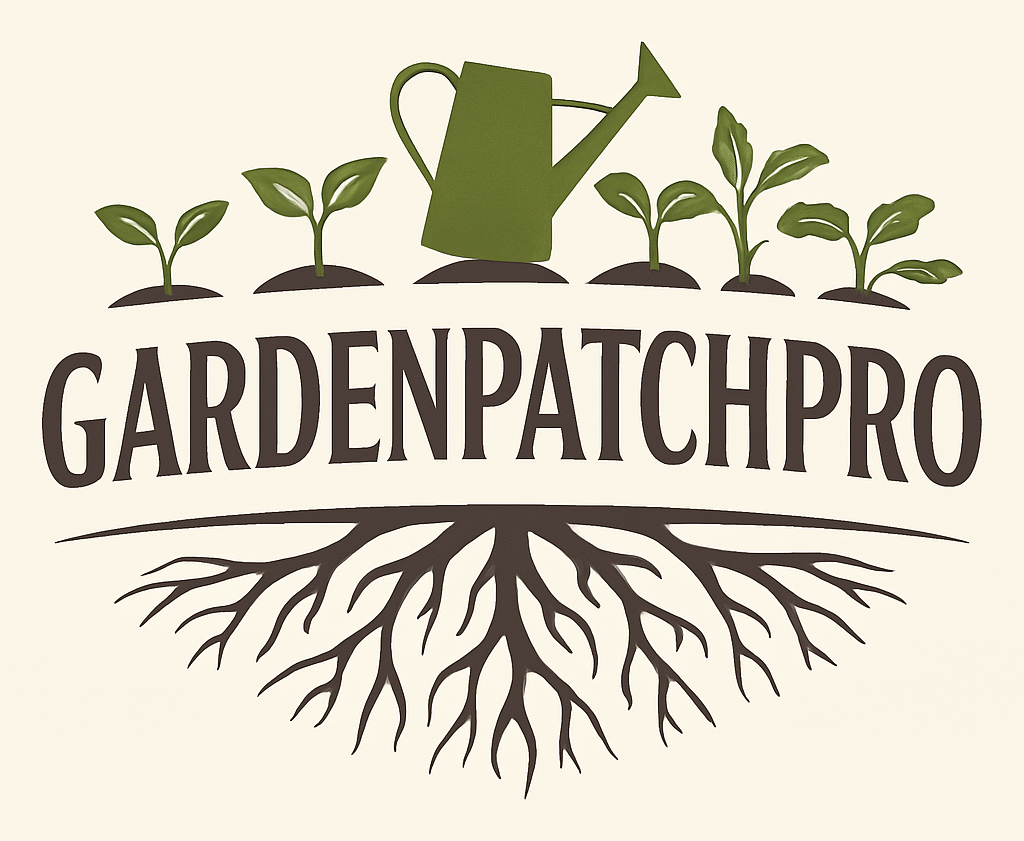11 Backyard Greenhouse Ideas to Maximize Space and Enhance Growth
Many people want to extend their growing season and protect plants from harsh weather. A backyard greenhouse offers a practical way to achieve this by creating a controlled environment for plants. This makes it possible to grow flowers, vegetables, and herbs year-round.
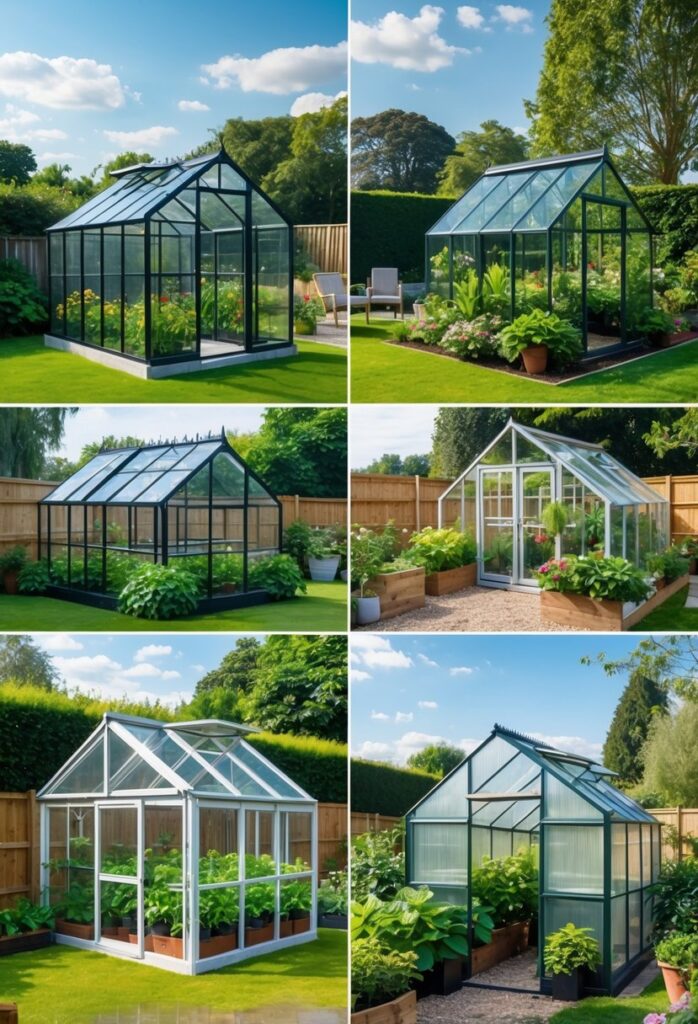
A greenhouse can help gardeners maximize space and improve plant health, regardless of outdoor conditions. With various designs and sizes available, there are options to fit different budgets and yard spaces. This article highlights 11 backyard greenhouse ideas to inspire and guide anyone interested in starting or upgrading their garden setup.
1) Lean-to Greenhouse for Space Efficiency
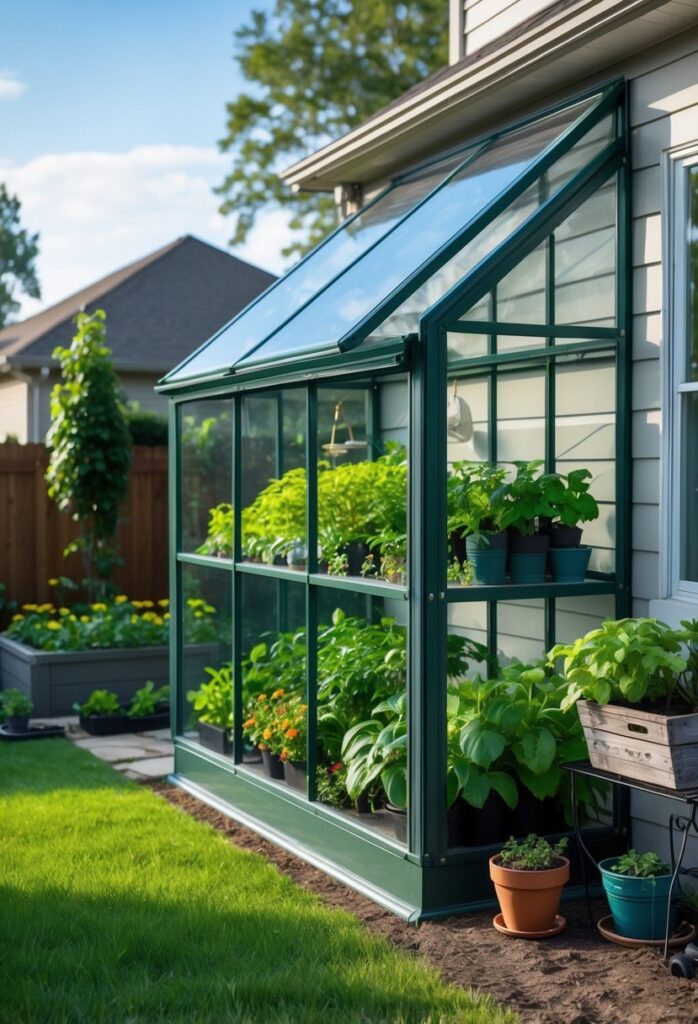
A lean-to greenhouse attaches directly to an existing wall. This design uses the wall’s heat to keep the greenhouse warmer. It also saves a lot of space, making it ideal for small yards.
Because it shares a wall with a building, it needs fewer materials. This lowers the cost and makes construction faster. The wall helps protect plants from harsh weather.
Lean-to greenhouses are easy to access from indoors. Gardeners can tend their plants without going outside in bad weather. This makes it practical for year-round growing.
This style allows good sunlight because the roof leans at an angle toward the sun. It maximizes solar gain while using minimal space. For more ideas on lean-to designs, visit lean-to greenhouse guides online. One good example is at greenhouse-guide.com for backyard lean-to greenhouses.
2) Victorian-Style Glass Greenhouse

A Victorian-style glass greenhouse is known for its classic look and elegant design. It often features tall, narrow windows and decorative trim, creating a timeless feel. These greenhouses blend well with traditional homes and gardens.
They are made mostly of glass and wood or metal frames. This allows plenty of sunlight inside, which helps plants grow year-round. The glass panels also give a clear view of the plants and flowers inside.
This type of greenhouse is more than just functional. It adds beauty and value to a backyard. Many people use it as a peaceful retreat or a creative space.
Victorian greenhouses come in different sizes, from large backyard structures to smaller models for tight spaces. Builders often offer custom options to match the style of a home. For detailed ideas, see the collection of Victorian glass greenhouses.
3) Geodesic Dome Greenhouse

A geodesic dome greenhouse uses a dome shape made from interconnected triangles. This shape gives strong structural support while using less material compared to traditional greenhouses.
The dome design maximizes sunlight exposure. Plants inside receive light from many angles, helping them grow more evenly.
The shape also creates a large interior space with good air circulation. This makes it easier to grow taller or vertical plants.
Building a geodesic dome can be done with wood, metal, or pipe connectors. Some designs focus on simple construction for DIY gardeners.
This type of greenhouse helps extend the growing season by protecting plants from wind and cold. It is a popular choice for sustainable backyard gardening.
Learn more about building a geodesic dome greenhouse at a detailed DIY building guide.
4) Mini Greenhouse for Limited Areas
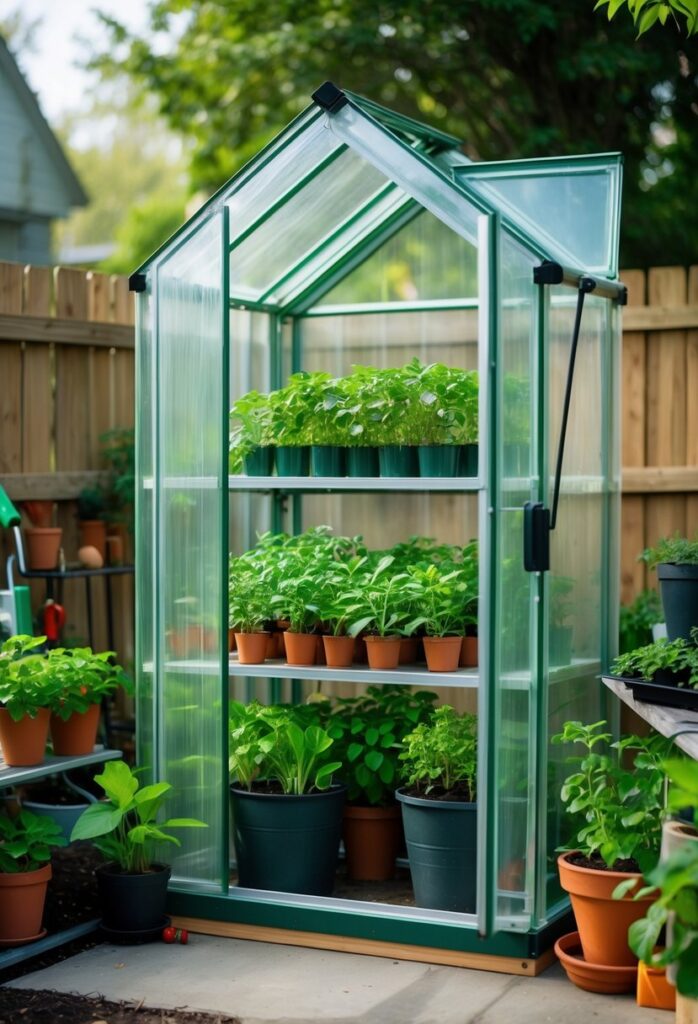
A mini greenhouse is ideal for small yards, patios, or balconies. It helps gardeners grow plants in tight spaces without needing a large footprint. These compact designs are easy to build and fit where bigger greenhouses cannot.
They often use simple materials like old windows, plastic sheets, or repurposed frames. This keeps costs low while still providing protection for plants from cold and pests.
Mini greenhouses can be placed on patios or against walls, making use of unused space. They help extend the growing season by keeping plants warm and sheltered.
For those with very limited areas, vertical mini greenhouses like bookshelf-style units maximize space. These allow growing multiple plants by stacking shelves in a small footprint.
More ideas and practical DIY projects for small greenhouses can be found at 19 Charming DIY Mini Greenhouse Ideas for Your Garden Oasis.
5) Wooden Frame Greenhouse with Natural Light
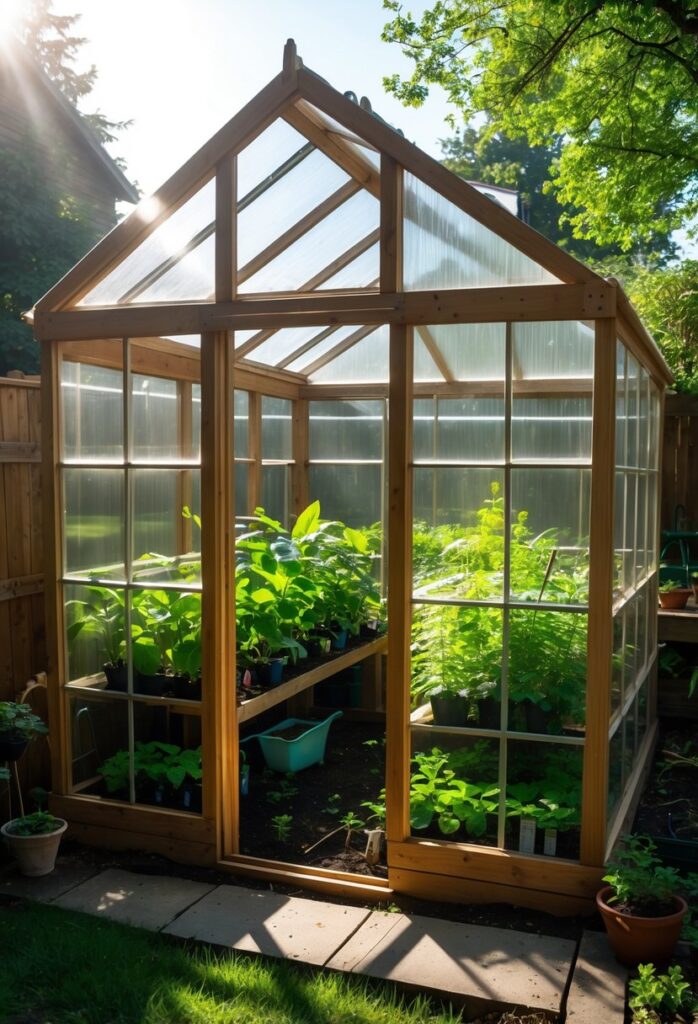
A wooden frame greenhouse offers a warm and natural look that fits well in most gardens. The wood adds a charming touch while being sturdy enough to support clear panels or plastic coverings.
Natural light is essential for healthy plant growth. Using clear panels with the wooden frame lets sunlight stream in, creating an ideal environment for vegetables, flowers, and herbs. The wood’s warmth also helps retain heat.
This type of greenhouse can be built using simple designs that keep costs low. Homeowners often choose wood because it blends well with outdoor surroundings and can be painted or stained to match the garden style.
Using reclaimed wood or locally sourced timber is common. This choice reduces environmental impact and offers a rustic feel.
For detailed ideas and plans on building a wooden frame greenhouse that maximizes sunlight, see this guide on 12 wood greenhouse plans you can build easily.
6) Repurposed Materials DIY Greenhouse
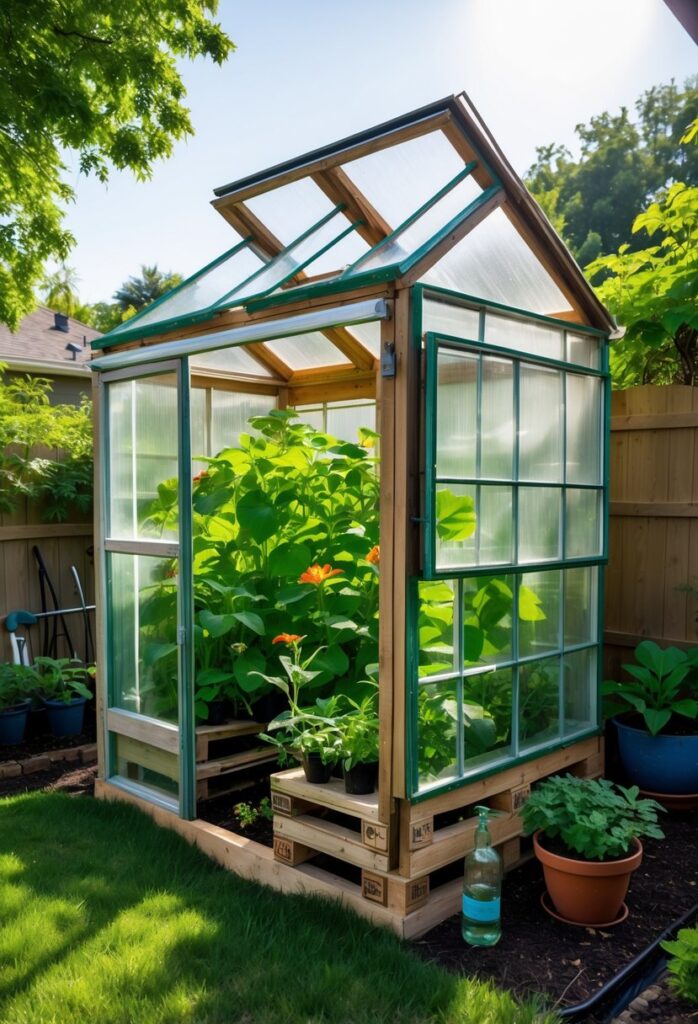
Using repurposed materials is a smart way to build a greenhouse on a budget. Old windows, doors, and wooden pallets are common items that can be given new life in a greenhouse structure. These materials provide sturdy frames and natural light while reducing waste.
Many DIYers find these parts from local salvage yards or free sources like curbside pickups. Repurposed windows create clear walls that trap heat and protect plants. Pallets and scrap wood can form the greenhouse’s base and supports.
This approach also allows for creative designs fitting different spaces. A lean-to greenhouse can be built against an existing wall using storm doors or old windows. These projects often require only basic tools and some time to clean and prepare the parts.
For more ideas on using repurposed materials to build greenhouses, you can explore detailed tutorials at places like Family Handyman’s site about unconventional ideas for greenhouses.
7) Budget-Friendly Plastic Hoop House
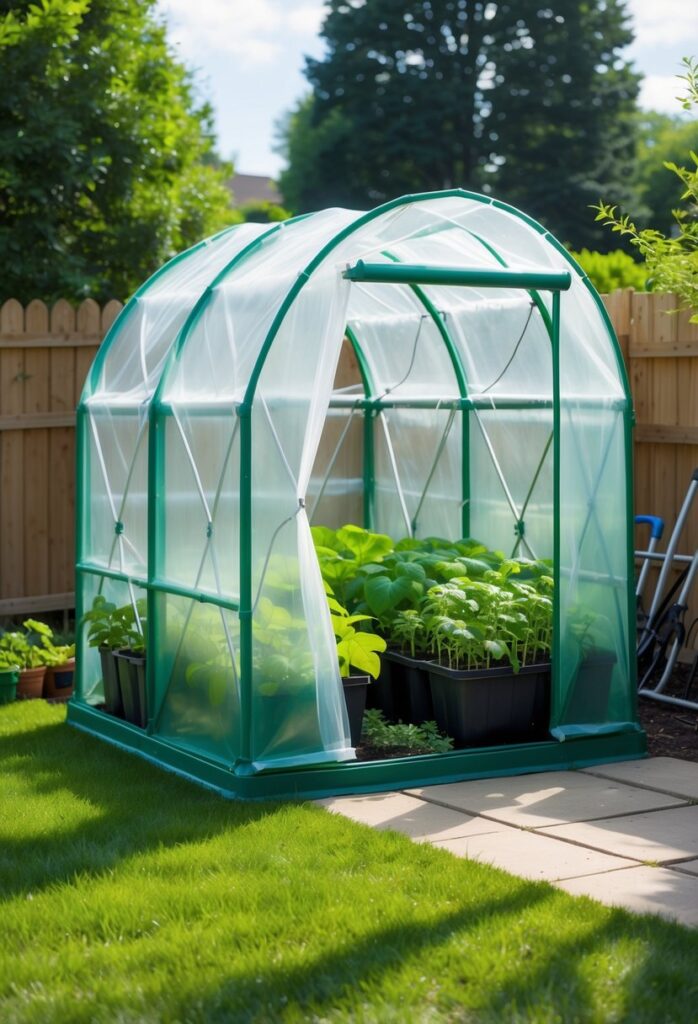
A plastic hoop house is a practical and affordable option for extending the growing season. It uses simple materials like PVC pipes or metal hoops covered with greenhouse plastic sheeting. These materials are easy to find and cost less than traditional greenhouses.
The structure is lightweight and easy to build, making it suitable for small yards. It provides protection from wind, frost, and pests while allowing sunlight to reach plants. The plastic cover helps keep warmth inside, which supports plant growth in cooler weather.
Building a hoop house can be done for under $100 if using recycled or low-cost materials. It requires basic tools and no advanced skills. For clear building instructions and tips on making a durable plastic hoop house, one can refer to guides like those found at Off Grid World or Country Homestead Living.
8) Tropical Oasis Greenhouse Retreat

A tropical oasis greenhouse creates a warm, lush environment for growing exotic plants year-round. It allows for growing fruits like mangoes and bananas in a controlled space. This type of greenhouse is designed to keep humidity and temperature at ideal levels for tropical plants.
Inside, plants such as palms, ferns, and flowering vines thrive. Water features or small fountains can add humidity and a relaxing atmosphere. The combination of vibrant greenery and warm air turns the greenhouse into a refreshing retreat.
This style works well for gardeners wanting a vibrant, tropical feel without traveling. It can be a peaceful space to relax or a practical place to cultivate rare plants. More ideas on designing a tropical greenhouse can be found in tropical backyard greenhouse guides.
For detailed tropical greenhouse ideas and tips, visit the Creating a Tropical Backyard Greenhouse for a Year-Round Slice of Paradise page.
9) Solar-Powered Automated Greenhouse
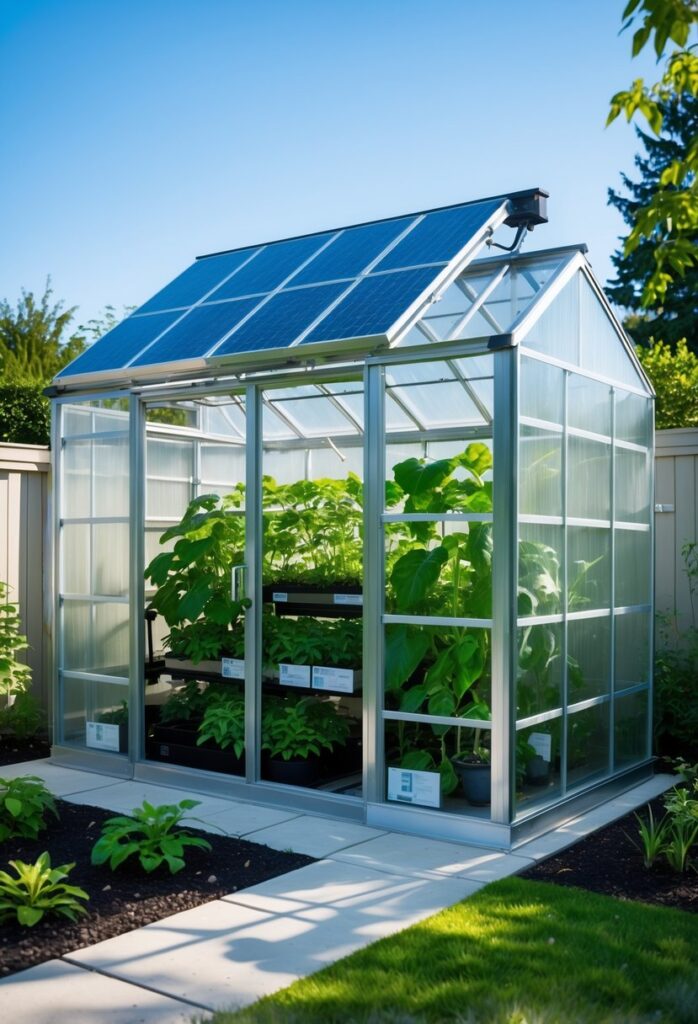
A solar-powered automated greenhouse uses solar energy to control temperature, ventilation, and watering without much human effort. This setup helps maintain ideal growing conditions while saving electricity.
Solar panels provide clean energy to run fans, vents, and irrigation systems. Automated vent openers adjust airflow based on temperature, keeping the environment stable for plants.
Some designs also use rainwater collection to supply water automatically, reducing water waste. This combination of solar power and automation makes gardening easier and more eco-friendly.
Building a solar-powered greenhouse requires planning for sunlight exposure and space. Choosing the right technology ensures the system works efficiently year-round. For more details, see solar greenhouse ideas that work.
10) Greenhouse with Integrated Potting Bench
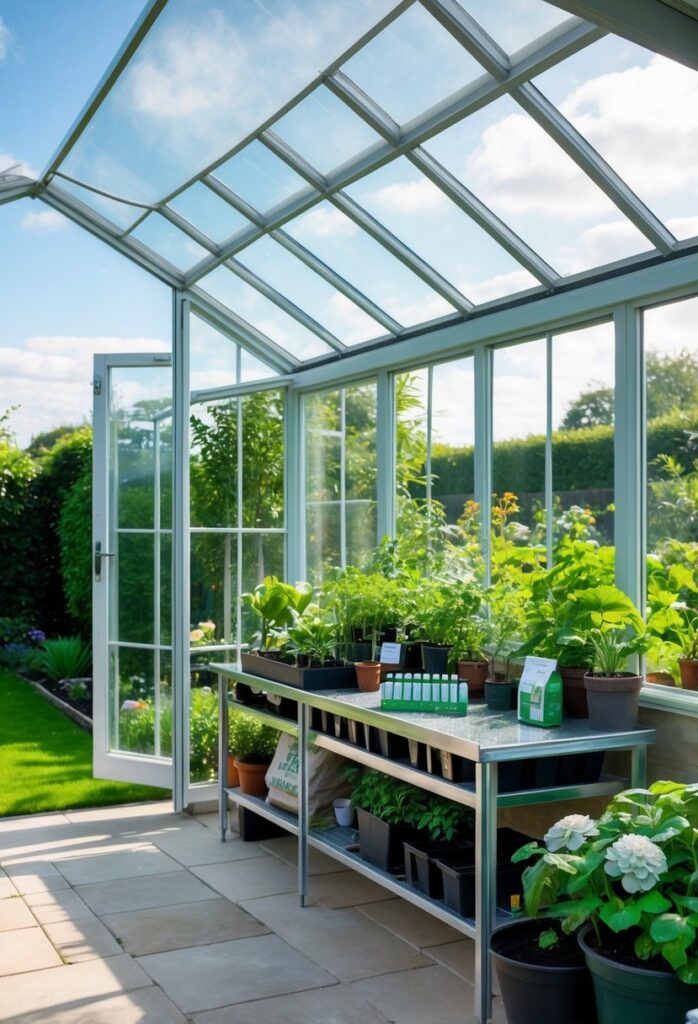
A greenhouse with an integrated potting bench combines plant care and workspace in one convenient area. This setup allows gardeners to pot plants, organize tools, and store supplies without leaving the greenhouse.
The potting bench also protects the workstation from weather. It keeps tools dry and makes it easier to work during rain or cold seasons. This increases productivity and comfort.
Designs often include shelves and drawers for better organization. Using durable materials like cedar adds longevity to the structure. It also creates a pleasant and functional space to enjoy gardening activities.
Such greenhouses improve workflow and create a peaceful retreat for gardening. They help blend practical needs with a relaxing environment. Many ideas and examples show how to create this efficient setup for any backyard size. For more details, see backyard greenhouse with shed ideas.
11) Season-Extending Cold Frame Greenhouse
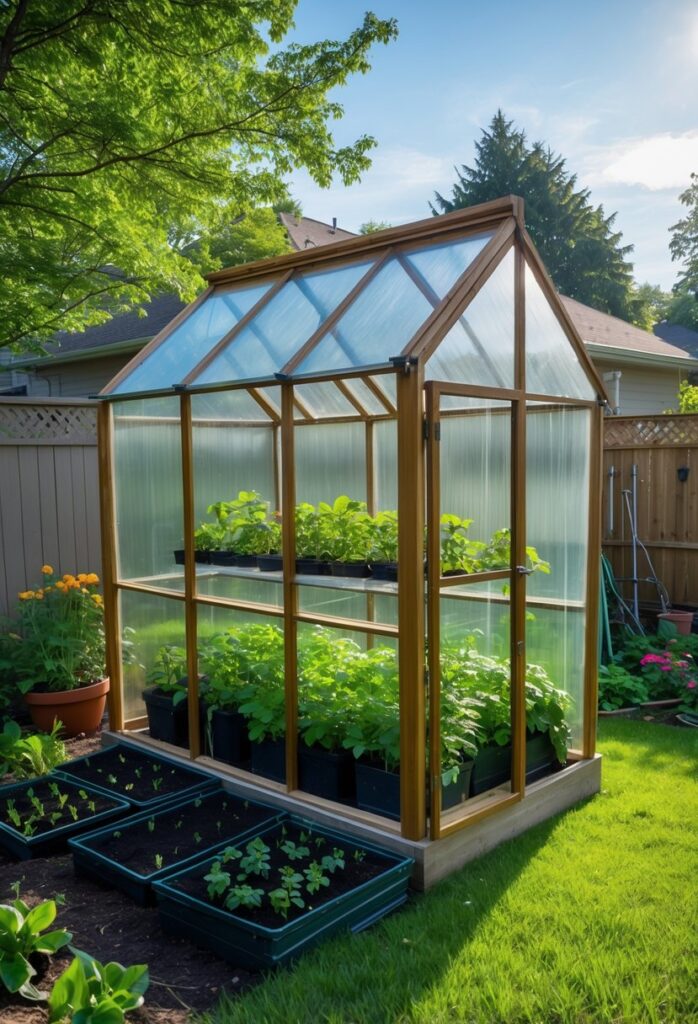
A cold frame greenhouse is a simple structure that protects plants from cold weather. It works like a mini greenhouse by trapping heat from the sun. This helps gardeners grow plants earlier in spring and later into fall.
Cold frames are usually made with a wooden or metal frame and a clear cover, like glass or plastic. They use passive solar heating, so no extra energy is needed. This makes them an affordable and easy way to extend the growing season.
They are perfect for starting seedlings or growing hardy crops during cooler months. Cold frames also protect plants from frost and wind damage. Many gardeners find them a useful tool for year-round gardening.
To learn more about building and using cold frame greenhouses, visit 15 Best Cold Frame Greenhouses That Will Extend Your Growing Season.
Key Considerations Before Building a Greenhouse
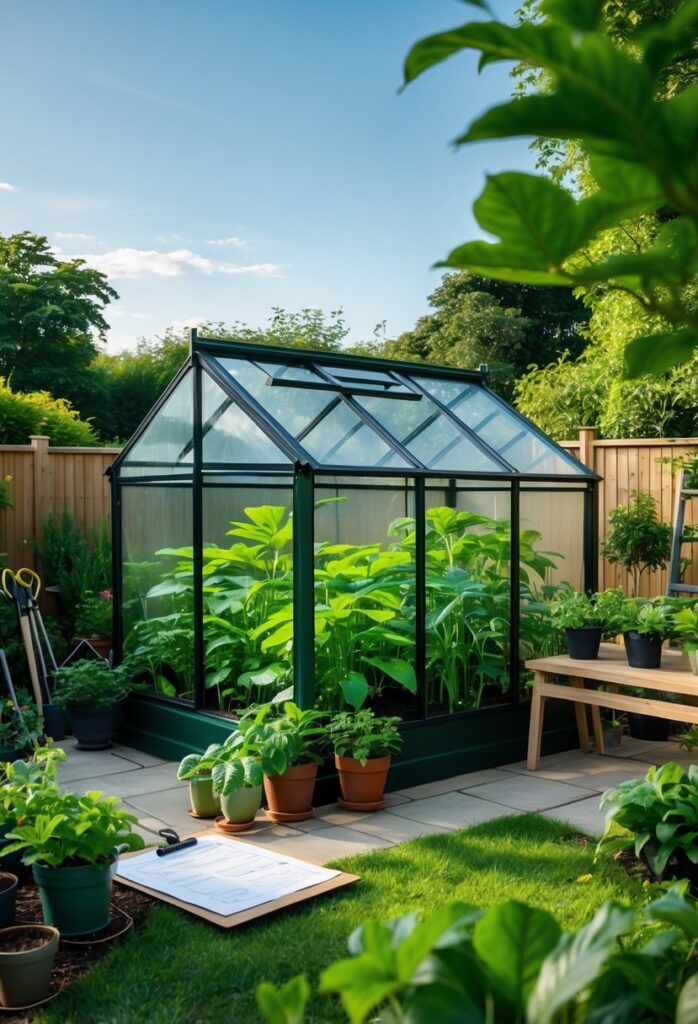
Building a greenhouse requires careful planning of its location, environment, and materials. Each factor influences how well plants will grow and how durable the structure will be.
Site Selection and Sunlight
Choosing the right site is one of the most important steps. The greenhouse should be placed where it gets at least 6 hours of direct sunlight daily, preferably facing south to maximize light exposure.
The chosen spot should be flat and well-drained to avoid water pooling around the base. Accessibility is also important, so the greenhouse is easy to reach during all seasons.
Avoid areas shaded by trees or buildings. Protection from strong winds is necessary because high winds can damage the structure or reduce internal temperatures, making heating the greenhouse harder.
Climate Control Essentials
Maintaining the right temperature and humidity inside is key to healthy plant growth. Good ventilation helps regulate temperature and air movement. This can be done through vents or fans.
Insulation techniques, like double glazing or thermal screens, reduce heat loss in cold weather. Heaters may be needed in colder climates, but adding passive solar heating methods can lower energy costs.
Monitoring humidity prevents mold and plant diseases. Using a mix of natural airflow and humidifiers or dehumidifiers maintains a balanced atmosphere inside the greenhouse.
Material Choices
The frame and covering materials affect durability, weight, and cost. Common frame options include wood, aluminum, and steel. Wood offers good insulation but needs maintenance. Metal frames are strong and low maintenance but can conduct heat away.
For covering, glass provides clarity and lasts long but can break easily and is heavy. Polycarbonate panels are lightweight, shatter-resistant, and offer good insulation but may yellow over time.
Choosing materials depends on budget, climate, and the types of plants grown. Combining materials, like a metal frame with polycarbonate panels, often balances cost and performance.
For more details on selecting site and materials, check these greenhouse setup ideas and greenhouse material tips.
Sustainable Practices for Backyard Greenhouses
A backyard greenhouse can reduce waste and energy use by applying smart design and materials. Efficient water use and low-impact heating are especially important to keep things eco-friendly and affordable.
Water Conservation Techniques
Collecting rainwater is one of the best ways to save water. Setting up gutters and barrels to catch runoff can supply much of the greenhouse’s irrigation needs. Using drip irrigation systems helps deliver water directly to plant roots, reducing evaporation and runoff.
Mulching inside the greenhouse also limits soil moisture loss. It keeps the ground moist longer, which cuts down on the watering frequency. Choosing drought-tolerant plants or ones adapted to local conditions can lower water use as well.
Recycling greywater from sinks or showers for watering is another option. Just make sure the water is free of harmful chemicals and solids before using it on edible plants.
Eco-Friendly Heating Options
Using passive solar design can greatly reduce heating costs. Positioning the greenhouse for maximum sunlight and using materials that store heat, such as stone or concrete floors, helps stabilize temperature.
Solar heaters, like solar air or water heaters, can provide warmth without fossil fuels. Installing thermal mass like water barrels inside stores heat during the day and radiates it at night.
Other options include compost heating systems that use natural decomposition to generate warmth. Electric heaters powered by renewable energy, such as solar panels, are also an efficient choice when extra heat is needed.
A well-insulated greenhouse with sealed doors and windows reduces heat loss and prevents energy waste.
Frequently Asked Questions
Backyard greenhouses can fit into many types of spaces and garden styles. They can be built with different materials and shapes to match both function and appearance. Many options let gardeners grow plants all year round while adding beauty or extra use to their outdoor area.
What are some creative greenhouse designs suitable for small backyards?
Small spaces benefit from designs like the Lean-to Greenhouse, which attaches to an existing wall to save room. Mini Greenhouses also work well, using compact frames that fit tight corners or patios without crowding. These designs maximize growing space with minimal footprint.
How can one incorporate a greenhouse into an existing garden layout?
A greenhouse can be placed near garden beds for easy access to plants. It works well near water sources and sunlight spots for better growing conditions. Some choose to build styles like the Wooden Frame Greenhouse that blend naturally with garden paths and plant beds.
What are modern approaches to backyard greenhouse construction?
Modern greenhouses often use eco-friendly materials and energy-efficient designs. Geodesic Dome Greenhouses provide strength and good air circulation while looking stylish. Technology like automated ventilation or light controls is also common in newer setups.
Can a greenhouse double as a living space, and what are the best practices for this?
Some greenhouses are designed to serve as relaxing spaces or sunrooms. To do this safely, it’s important to add proper insulation and temperature control. Using sturdy materials and ensuring good ventilation helps keep the space comfortable for people and plants.
What are efficient ways to set up a backyard greenhouse for year-round gardening?
Controlling temperature, humidity, and light is key. Adding vents or fans helps regulate air flow. Gardeners often use heaters during cold months and shade covers when it gets too hot. Choosing the right spot with good sunlight improves energy use.
What materials and styles are recommended for constructing a durable and aesthetically pleasing backyard greenhouse?
Glass and polycarbonate panels are popular for clear light transmission and weather resistance. Wooden frames offer a classic look and blend well with natural surroundings. Victorian-Style Glass Greenhouses provide an elegant appearance with durable structure. Combining strong materials with thoughtful design ensures long-lasting beauty.
For more ideas on backyard greenhouse designs and their uses, see 11 Greenhouse Ideas For Backyard in 2025.
